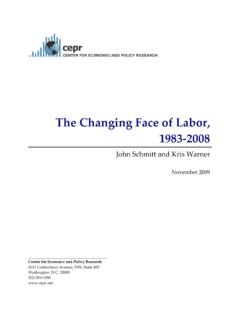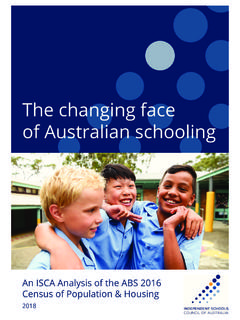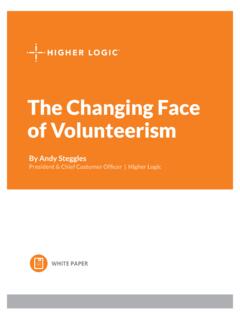Transcription of Copy of The Changing Face of the San Fernando Valley Rev 2…
1 The Changing Face of the San Fernando Valley By Joel Kotkin Erika Ozuna 2002 A Project of: Pepperdine University-School of Public Policy and the Economic Alliance of the San Fernando Valley PRELIMINARY DRAFT - PREVIEW EDITION San Fernando Valley 2 In tackling these challenges, the Valley s leadership must work not only to address these issues but do so in a way that stresses the common challenges an increasingly diverse population faces . There is no Latino housing crisis, or Armenian crime problem, or Vietnamese education deficit. These are common problems faced by all Valleyites; they can only be solved by this community acting as one. Special Thanks To: Jennifer Seuss, Karen Speicher, Val Aslanyan, Luci Stephens, Talar Aslanian, Gregory Ponds (Master of Public Policy Candidates School of Public Policy) James Wilburn, dean, School of Public Policy, as well as Jon Kemp, Tami McKelvy, Sheryl Kelo and Marie-Ann Thaler, all of Pepperdine University; David W.
2 Fleming, Robert L. Scott and Bruce D. Ackerman of the Economic Alliance of the San Fernando Valley Copyright 2002, Economic Alliance of the San Fernando Valley , 5121 Van Nuys Blvd. Sherman Oaks, CA - 818-379-7000 - All Rights ReservedTTaabbllee ooff CCoonntteennttss 1. Introduction 3 2. Historical Evolution: From the Chumash and Ranchland to America s Suburb 5 3. The Mestizo Valley 10 4. Are We on the Road to Ghettoization? 13 5. Rethinking the Valley as a Melting Pot Suburb 16 6. Looking Forward: Prospects for the Mestizo Valley 19 7. The Challenge to Leadership 22 San Fernando Valley 3 INTRODUCTION Few places in America over the past quarter century have undergone as profound a change in its ethnic character than the San Fernando Valley .
3 Back in the 1970s, the region was perceived - and rightly so - as a bastion of predominately Anglo, middle class residents living adjacent the most cosmopolitan society of Los Angeles. Today that reality has drastically changed. Since the 1970s, the Valley has itself become increasingly multi-racial largely as the result of migration of immigrants from such diverse places as Mexico, El Salvador, Iran, Israel, Armenia, Vietnam, Korea, India and China. By 1990, this pattern was already well-formed; a decade later, the evidence is incontrovertible. One-third of the Valley s million residents are foreign born1; only half are Anglo, and many themselves recent immigrants. Population by ( )Am. Indian and Alaskan Native( )Hispanic( )Black or African Am.( )Pacific Islander ( )Asian ( )Other race ( )2 or more races ( ) Source: Census 2000 The Changing Face of theSan Fernando Valley San Fernando Valley 4 Indeed today, the Valley is not only as diverse as the rest of Los Angeles, but in some ways more so, with higher rates of Hispanic, Asian and Latino growth, but also less white flight than the city south of Mulholland.
4 In the process, the Valley has become the epicenter for much of ethnic Southern Glendale, for example, now boasts the largest concentration of ethnic Armenians outside Armenia itself. The Los Angeles portions of the Valley contain not only the city s most heavily Latino district, but also those that have the largest percentages of mixed race The Valley today is an ethnic kaleidoscope of a new Los Angeles and new America - melting pot, salad bowl , home to both ethnic mobility and pockets of deep-seated poverty. 91222 San Fernando ValleyBurbankGlendaleChatsworthWest HillsCanogaParkWoodland HillsCalabasasWinnetkaTarzanaEncinoSherm an OaksStudio CityNorth HollywoodVan NuysResedaNorthridgeNorth HillsGranada HillsMission HillsPanorama CityArletaSylmarLakeview TerraceSunlandSun ValleyTujungaSan FernandoPacoimaHidden HillsUniversal CityToluca LakeValley VillageLos Angeles CountyLos Angeles CountyVenturaCountyBellCanyonCity of Los AngelesCity ofCity ofCity ofCity ofCity of Source: San Fernando Valley Almanac 2000; Economic Alliance of the San Fernando Valley Yet, to many from outside the region, and some within, the Valley still remains a prisoner of old stereotypes.
5 Attempts by Valley residents to assert their political will - including that of self-determination - often are characterized by media, academic and even political leaders as inherently divisive expressions of exclusionist Anglo sentiments. Two UCLA researchers, for example, recently caricatured the drive for Valley independence as a class-based, strongly racialized, movement of social separation. 4 As the Valley , both the Los Angeles portion and the independent cities, work to achieve a vision for the new century, such characterizations are both unrealistic and totally self-defeating. The Valley today is not a bland homogenized middle class suburb; it is an increasingly cosmopolitan, diverse and racially intermixed region united by a common geography, economy and, to a large extent, middle class aspirations.
6 It is upon these grounds, not notions of racial exclusivity or competition, that residents of the Valley , no matter their background, can best build a new kind of commonwealth that could become a model for 21st Century Southern California. Source: CivicCenter Group San Fernando Valley 5 HHIISSTTOORRIICCAALL EEVVOOLLUUTTIIOONN:: FFRROOMM TTHHEE CCHHUUMMAASSHH AANNDD RRAANNCCHHLLAANNDD TTOO ``AAMMEERRIICCAA SS SSUUBBUURRBB For the most part, the demographic history of the Valley is dominated by the recent past. The Valley s population quintupled between 1945 and 1960. By the 1980s, more than one million people called the Valley home. By 2000, million people lived More than three quarters ( percent) of the Valley s population lives in twenty-seven named communities in the City of Los Angeles.
7 The remainder lives in four independent cities: Burbank (106,480 people), Calabasas (20,455 people), Glendale (203,734 people), and San Fernando (24,722 people).6 One-third of the City of Los Angeles s population lives in the San Fernando Valley . Yet, despite the relatively recent arrival of most Valley residents, the area has a long, and significant, history of settlement. As in every habitable portion of North America, the San Fernando Valley s original residents were Native Americans. For thousands of years two indigenous people, the Tongva and Chuman, inhabited the region. Like much of California, the area was, comparatively speaking, densely populated, with as many as 5,000 people settled among its various villages. Huwam, a Chumash village, rested in the low hills of Canoga Park for as many as 1500 Source: California State University Northridge San Fernando Valley History Digital Library The arrival of Spanish settlers and missionaries in the region, starting with the establishment of the San Fernando Mission in 1797, brought about a gradual decline in this population and an effective end to the Native American culture.
8 Diseases, killings by soldiers, rape and intermarriage all effectively wiped out the purely native population by the time of the American conquest a century and a half later. 8 Many Native Americans at first resisted acculturation; one historian has asserted that mixed race children among them were secretly strangled and buried for several But by1900, according to historian Lawrence Jorgensen, the Native American population in California had been reduced ninety-five percent to its estimated pre-discovery level. Source: California State University Northridge San Fernando Valley History Digital Library The Valley s period under Church domination ended in 1834 when California, now under the rule of the independent Republic of Mexico, secularized the missions. The Native American population, already drastically diminished, was once again dispossessed as land and power now transferred from the at least somewhat beneficent padres to the more profit-oriented Dons.
9 The Valley , like much of Southern California, became the province of vast ranchos based on an economy of cattle-raising. Most of the land fell under the control of Eulogio de Celis, a Spaniard living in Los Angeles. Gradually, as the Native American population diminished, the work San Fernando Valley 6 on the ranches, as well as in the growing nearby pueblo of Los Angeles, was done by immigrants from Mexico. 10 Even after the American seizure of California in 1848, the land ownership of the Valley remained largely in the hands of Spanish-speaking Dons. 11 But as boom times came to California, the ethnic ownership, as well as the overall demographics, began to change. Newcomers from both Mexico proper and the predominately Anglo-Saxon United States poured in to seek out gold and other minerals, but, for the most part, it was the gringos who prevailed.
10 Much of what took place was outside the law: the lynching of Mexicans was accompanied by the appearance of vengeance-seeking bandits, vengadores, among the increasingly displaced population of Spanish speakers throughout the period from the 1850s to the 1870s. The Dons, who had continued to prosper, began to lose control of their holdings, particularly after the severe drought of the 1860s made them incapable of paying off their often-extravagant The new owners were, for the most part, northern Europeans - German, English, and French - who picked up the land from increasingly destitute Californios. Isaac Lankershim, a Prussian Jew who converted to Christianity, his son in law, Isaac Newton van Nuys, a Protestant preacher, Charles Maclay and Benjamin Porter, a San Francisco real estate investor was an important part of the core group that would soon market the Valley s farmland, and ultimately begin its sub-division into housing With the arrival of the railroads in the 1870s and 1880s, the region became accessible to Los Angeles and the east coast.










